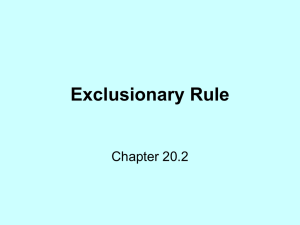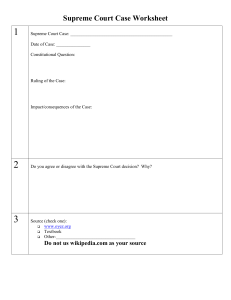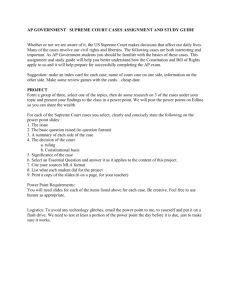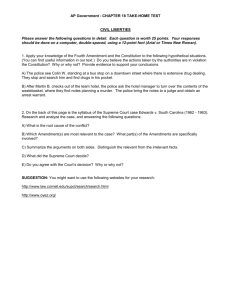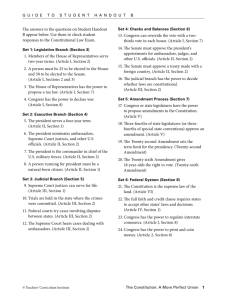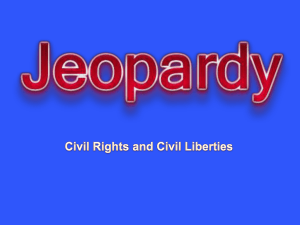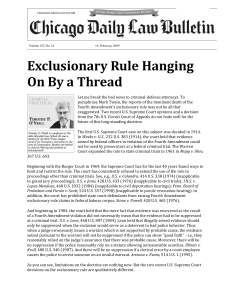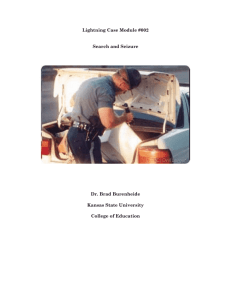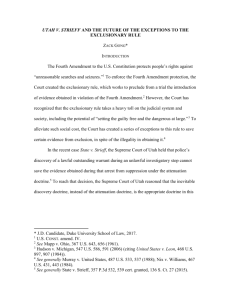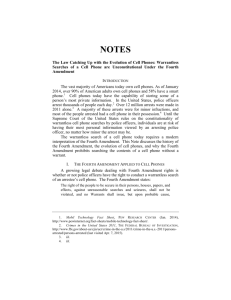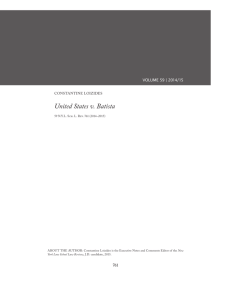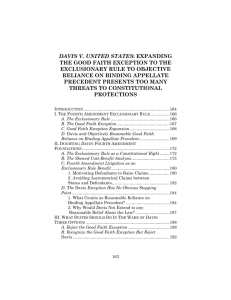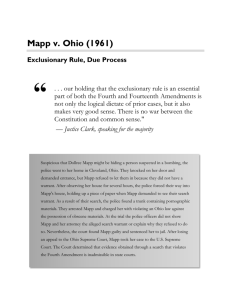Criminal Justice Final Exam Review – Term 3 2006 These
advertisement
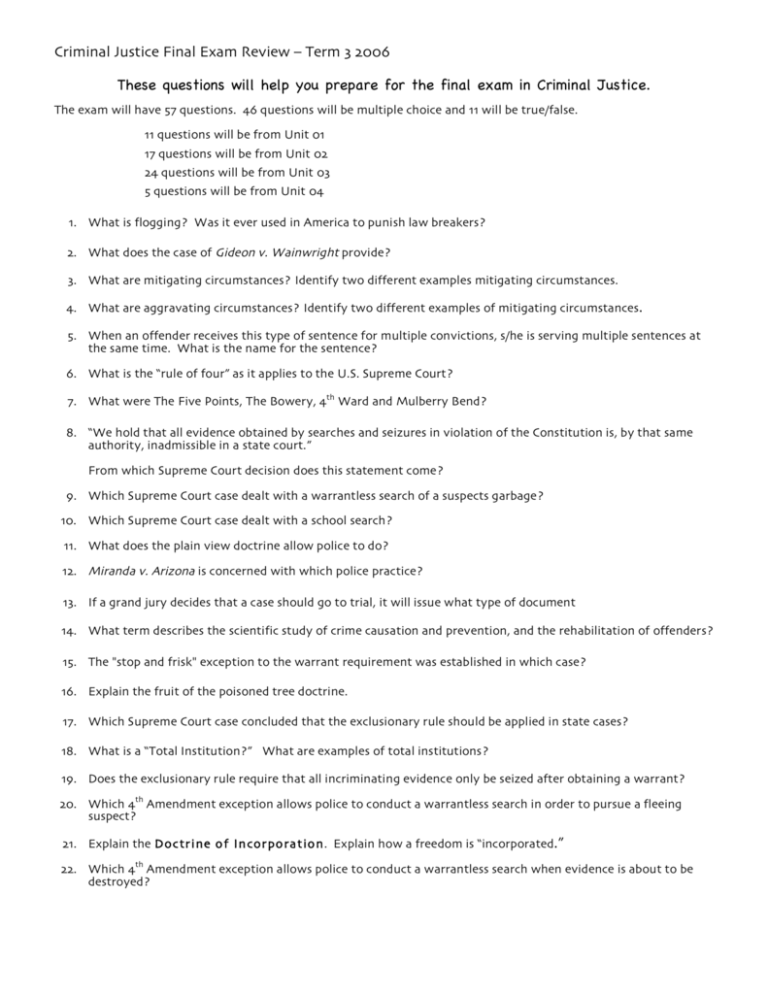
Criminal Justice Final Exam Review – Term 3 2006 These questions will help you prepare for the final exam in Criminal Justice. The exam will have 57 questions. 46 questions will be multiple choice and 11 will be true/false. 11 questions will be from Unit 01 17 questions will be from Unit 02 24 questions will be from Unit 03 5 questions will be from Unit 04 1. What is flogging? Was it ever used in America to punish law breakers? 2. What does the case of Gideon v. Wainwright provide? 3. What are mitigating circumstances? Identify two different examples mitigating circumstances. 4. What are aggravating circumstances? Identify two different examples of mitigating circumstances. 5. When an offender receives this type of sentence for multiple convictions, s/he is serving multiple sentences at the same time. What is the name for the sentence? 6. What is the “rule of four” as it applies to the U.S. Supreme Court? 7. What were The Five Points, The Bowery, 4th Ward and Mulberry Bend? 8. “We hold that all evidence obtained by searches and seizures in violation of the Constitution is, by that same authority, inadmissible in a state court.” From which Supreme Court decision does this statement come? 9. Which Supreme Court case dealt with a warrantless search of a suspects garbage? 10. Which Supreme Court case dealt with a school search? 11. What does the plain view doctrine allow police to do? 12. Miranda v. Arizona is concerned with which police practice? 13. If a grand jury decides that a case should go to trial, it will issue what type of document 14. What term describes the scientific study of crime causation and prevention, and the rehabilitation of offenders? 15. The "stop and frisk" exception to the warrant requirement was established in which case? 16. Explain the fruit of the poisoned tree doctrine. 17. Which Supreme Court case concluded that the exclusionary rule should be applied in state cases? 18. What is a “Total Institution?” What are examples of total institutions? 19. Does the exclusionary rule require that all incriminating evidence only be seized after obtaining a warrant? 20. Which 4th Amendment exception allows police to conduct a warrantless search in order to pursue a fleeing suspect? 21. Explain the Doc tr ine o f In cor po ratio n. Explain how a freedom is “incorporated.” 22. Which 4th Amendment exception allows police to conduct a warrantless search when evidence is about to be destroyed? Criminal Justice Final Exam Review – Term 3 2006 23. Which 4th Amendment exception allows police to conduct a warrantless search to make a list of an arrestee’s belongings? 24. Which 4th Amendment exception allows police to conduct a warrantless search of not only an arrestee, but also the immediate area? 25. Name the Chief Justice of the U.S. Supreme Court. Name at least three associate justices. 26. What are the five goals of sentencing? 27. What is the difference between specific deterrence and general deterrence? 28. What is the definition of probation? 29. What is the most commonly used form of sentencing, parole or probation? 30. Within the prison subculture, several personality types exist, such as a “mean dude.” Identify and define these personality types. 31. Be able to define the following as they relate to prison capacity: a. design capacity b. operational capacity c. rated capacity 32. "By the reasoning of today's decision, the millions of these students who participate in interscholastic sports, an overwhelming majority of whom have given school officials no reason whatsoever to suspect they use drugs at school, are open to an intrusive body search." From which Supreme Court decision does this statement come? 33. What is a three-strikes law? 34. What is the standard of proof necessary for an arrest to occur? 35. Which amendment protects citizens against unreasonable searches and seizures of evidence? 36. Two subcultures exist in prisons. Identify and define the two subcultures. 37. An offender is sentenced to 2-5 years in prison, but the entire sentence is suspended and the offender serves his time in the community. What is the status of the offender? 38. What is “judicial review?” Why is it so important?
